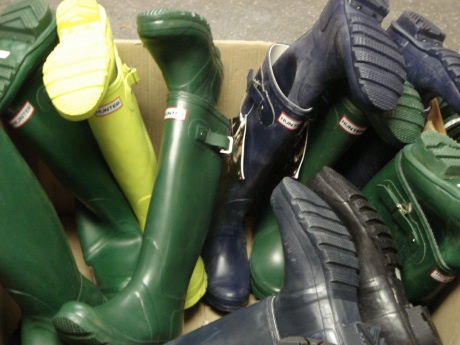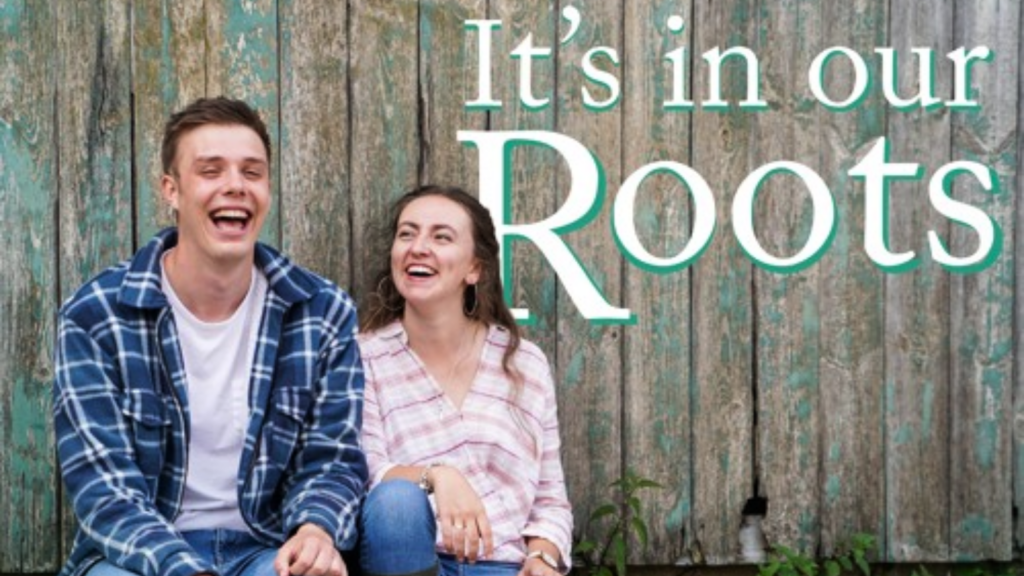Hunter Boots: Alive and Kicking
Friday, November 30th, 2007
When we told people that we were going to visit the Hunter boot factory in Dumfries, the immediate response was, “I thought they went bust, what happened?” To be honest, we weren’t entirely sure but we knew they were still operating as they’d been kind enough to sponsor us with a few prizes over the last year. Intrigued, we headed off to hear it straight from the horse’s mouth.

We were met by Managing Director, Malcolm Cannon, in what seemed to us more like an office block and a most unlikely place for a welly boot factory. Nevertheless, we were led upstairs to Hunter HQ, where Malcolm explained that they were exceptionally busy but extremely pleased as they had just achieved a one million double whammy: £1 million worth of sales in the UK that month and $1 million in the US. Obviously, they weren’t doing that badly then!

We were then taken to the boardroom, where the walls are covered in Hunter boots of all description, ranging from designs that are no longer in production to the latest high-tech industrial boots. After some polite chitchat, Emma bravely cut to the chase – what exactly did happen?
To cut a long story short, the company went into administration about 18 months ago but was then bought out by a consortium, which got the brand name, a bit of stock, some machinery and a few members of staff. Malcolm joined Hunter at this point and they have spent the last year or so deconstructing the company and pretty much starting from scratch. The strategy was to keep it simple by concentrating solely on boots and, of those, the lines they know they can sell. This means the clothing lines have had to go, the only accessories they sell are socks and welly socks, and – much to her disappointment – they have stopped making waders so Lucy won’t be able to replace hers when they finally give in to wear and tear!
They still have around 100 different styles of boot though, and that is certainly enough to keep them busy. The Hunter Original is their best seller and, despite the assortment of colours available, green, navy and – more recently – black are the most popular. The key to their success, both at home and abroad, is their undeniable ‘British-ness’ and, whilst modern is good, too trendy is bad, as they aim to be timelessly stylish. Their two royal warrants don’t do any harm either, and the fact that they are “supplier of waterproof footwear to the Queen and Prince Philip” is great for sales in countries like Japan. Chuck in a few photos of do-know-wrong queen of fashion Kate Moss wearing them at Glastonbury and you’re onto a winning formula. We did point out that we were featured in the Telegraph wearing our Hunters a few months back, but Malcolm didn’t look terribly impressed so I don’t think that it can have affected sales dramatically!
Also, did you know that every fireman in the UK wears Hunter boots? They might not have it on the label, but the steel-capped, fire and electricity-resistant boots they wear are part of Hunter’s technical range. The range also includes chainsaw resistant forester’s boots, which apparently give you about two extra seconds if you happen to drop a chainsaw on your foot!
Having done away with the some of the ‘old’, they need to think about the ‘new’ and are planning to launch a new super boot next spring. Said boot is currently undertaking 6 months’ ‘wear testing’, whereby a panel of 25 local people (mostly gamekeepers) are asked to wear mixed pairs (one new boot and one old boot) and then send them back to Hunter with their comments. Something else to look out for this Christmas is neoprene-lined boots for kids, which are proving to be very popular. It might seem a little extravagant, but nothing upsets the little terrors more that getting snow in their boots, or their socks falling down, so this new boot would cater for every eventuality!
If like us you watched Play School as a child and thought the best bit was seeing how something was made, you’ll understand our excitement when we found out we got to see the boots being manufactured. It might have looked like an office block at the front but looks are deceiving and stretching out the back was a fully operational welly boot factory. Whilst many of the boots are manufactured abroad, all the top-end (i.e. neoprene- and leather-lined) and technical boots are made on site. Furthermore, when they say that they’re ‘handmade’, they really are, for every little bit of the boot gets stuck together by one of the 25 people who work in the factory.
Once the rubber arrives, it is mashed up, beaten and rolled out onto huge cutting tables, where different cutters (not unlike pastry cutters) are employed for each individual section of the boot. Step by step, each section is then placed on top of a metal ‘last’ (pictured below) – starting with the neoprene or leather ‘sock’, then the heel piece, the rubber on the outside, the sole, and finishing with the famous Hunter logo – until an individual boot has been created.

The boots are then cooked, or ‘vulcanised’, in big oven so that all the molecules in the rubber are bonded together, making it stronger and waterproof. The boots are then trimmed, checked over thoroughly by one of the factory workers and packaged up for sale. There is very little waste as the unvulcanised rubber trimmings from the cutting table can just be mashed up and used again.
The whole process was fascinating and we shall continue to wear our Hunters with pride, safe in the knowledge that they won’t be going out of business any time soon. But just one lovely little welly-manufacturing fact to finish off with: every time it rains solidly for 48 hours and we’re all grumbling about the weather, the Hunter staff get cakes to celebrate!
For more information about Hunter and their product ranges, visit their website.


